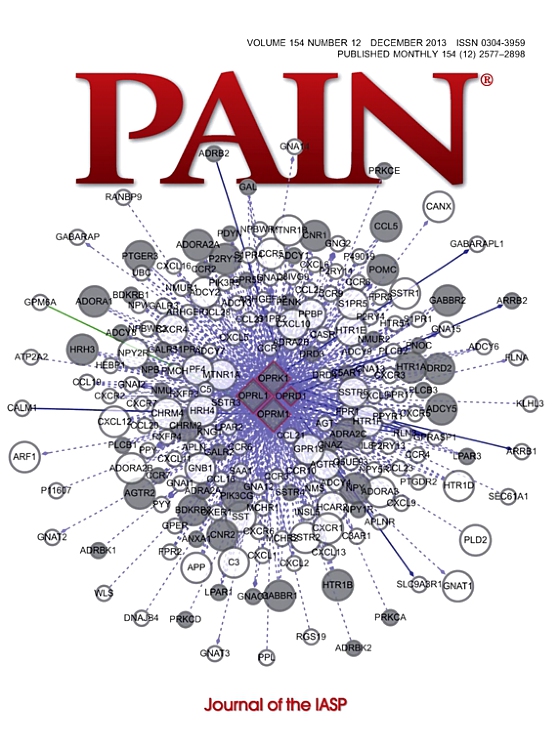Melatonin for neuropathic pain: a double-blind, placebo-controlled, randomized, crossover trial.
IF 5.9
1区 医学
Q1 ANESTHESIOLOGY
引用次数: 0
Abstract
Neuropathic pain (NP) is a common challenging problem, and there is a growing need to develop safe and effective nonopioid treatments. Sleep disturbance is commonly associated with NP because pain intensity of NP conditions is often worse at night. Some evidence suggests that the pineal hormone, melatonin, may reduce pain in clinical settings. We conducted a clinical trial to evaluate the efficacy of melatonin for NP. Using a double-blind, placebo-controlled, crossover design, 31 adults with NP were randomly allocated to 1 of 2 sequences of treatment with melatonin and placebo. During each of 2 treatment periods, participants took capsules containing melatonin or placebo for 4 weeks, followed by a 7-day washout period. The primary outcome was mean daily pain intensity (0-10) at maximally tolerated doses (MTD) during each period. Secondary outcomes, assessed at MTD, included adverse events, and measures of sleep, mood, and quality of life. Thirty-one participants were recruited, and 30 participants completed both treatment periods of the trial. The mean maximal tolerated dose of melatonin in this trial was 11.9 mg/day. Treatment-emergent adverse events with melatonin were infrequent and not statistically different from placebo. At MTD, mean daily pain (standard error) was 4.1 (0.3) for melatonin and 4.2 (0.3) for placebo (P = 0.8). There were no statistically significant differences between placebo and melatonin for any secondary outcomes. Overall, the results of this trial do not provide any evidence to suggest promise for melatonin as an effective treatment for NP.褪黑素治疗神经性疼痛:一项双盲、安慰剂对照、随机、交叉试验。
神经性疼痛(NP)是一个常见的具有挑战性的问题,越来越需要开发安全有效的非阿片类药物治疗。睡眠障碍通常与NP相关,因为NP的疼痛强度通常在夜间更严重。一些证据表明,松果体激素,褪黑激素,可以减轻临床疼痛。我们进行了一项临床试验来评估褪黑素对NP的疗效。采用双盲、安慰剂对照、交叉设计,31名患有NP的成年人被随机分配到褪黑素和安慰剂治疗的两个序列中的一个。在两个疗程的每一个疗程中,参与者服用含有褪黑激素或安慰剂的胶囊4周,然后是7天的洗脱期。主要结局是在每个时间段内最大耐受剂量(MTD)下的平均每日疼痛强度(0-10)。在MTD评估的次要结果包括不良事件、睡眠、情绪和生活质量的测量。招募了31名参与者,其中30名参与者完成了试验的两个治疗期。在这项试验中,褪黑素的平均最大耐受剂量为11.9 mg/天。褪黑素治疗后出现的不良事件很少,与安慰剂没有统计学差异。在MTD,褪黑激素组的平均每日疼痛(标准误差)为4.1(0.3),安慰剂组为4.2 (0.3)(P = 0.8)。安慰剂组和褪黑素组在次要结果上没有统计学上的显著差异。总的来说,本试验的结果没有提供任何证据表明褪黑素有望作为NP的有效治疗。
本文章由计算机程序翻译,如有差异,请以英文原文为准。
求助全文
约1分钟内获得全文
求助全文
来源期刊

PAIN®
医学-临床神经学
CiteScore
12.50
自引率
8.10%
发文量
242
审稿时长
9 months
期刊介绍:
PAIN® is the official publication of the International Association for the Study of Pain and publishes original research on the nature,mechanisms and treatment of pain.PAIN® provides a forum for the dissemination of research in the basic and clinical sciences of multidisciplinary interest.
 求助内容:
求助内容: 应助结果提醒方式:
应助结果提醒方式:


